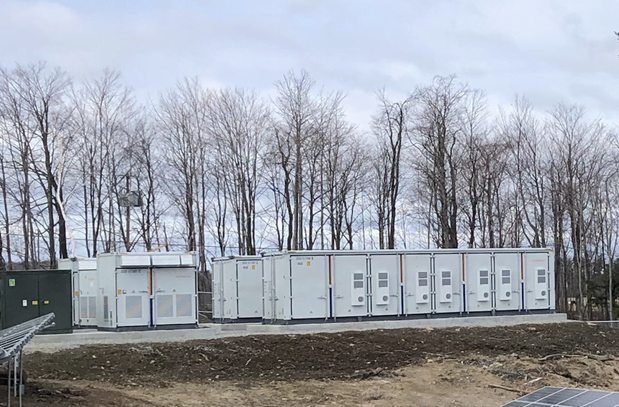
It reported US$25.5 million in revenues for Q1 2024, down from US$67.3 million in the first quarter of 2023, while bookings dropped from US$363.5 million in Q1 2023 to just US$23.8 million in the quarter just gone.
However, while its net loss increased to US$72.3 million in Q1 from US$44.8 million in last year’s equivalent, its contracted backlog of US$1.9 billion was 33% more valuable than at the end of Q1 2023, when it stood at US$1.6 billion.
Stem Inc also increased its contracted annual recurring revenue (CARR) by 25% year-on-year, climbing from US$71.5 million to US$89.3 million, and achieved a Non-GAAP gross margin of 24%, a quarterly record for the company.
CEO John Carrington claimed Stem Inc is on a “strong foundation” to meet guidance, and that the company can achieve its goals and continue to grow the business “without additional equity issuance.”
The company reaffirmed that it expects to meet previously issued full-year 2024 guidance on adjusted EBITDA (US$5 million – US$20 million), bookings (US$1.5 billion – US$2 billion), year-end contracted annual recurring revenue (CARR, US$115 million – US$130 million) and operating cash flow (>US$50 million).
Stem Inc’s business lines include commercial and industrial (C&I) behind-the-meter (BTM) battery storage projects, which deliver electricity bill savings for customers while providing grid services and demand response for utilities.
It has also branched out into front-of-the-meter (FTM) battery energy storage system (BESS) projects, including hybrid resources paired with solar PV. It also has a solar PV asset management business and associated software offerings.
The company used the occasion of its financial results announcement to talk up its PowerTrack Asset Performance Management (APM) suite, a new asset management software suite for renewable energy and energy storage assets, based on Stem’s asset management software and Athena AI-driven energy management platform.
Stem Inc attributed revenue drop to legacy contracts, bookings fall to seasonality of front-of-the-meter market
According to the company’s Form 10Q filed with the US Securities and Exchange Commission (SEC), its Q1 2024 revenues took a US$33 million hit due to the changing value of legacy contracts signed with customers prior to July 2023.
Stem Inc had agreed to guarantee the value of certain purchased hardware would not decline over a set period. If the hardware could not be installed at the customer project within that set period, the company would assist in the re-marketing and sale of the hardware, and if sold at a loss, compensate the customer.
The net revenue reduction led to the company recording a GAAP gross profit of -US$24 million. This type of contract is no longer being signed by the company.
The drop in bookings was attributed to an increased focus on large-scale FTM project contracts by the company, which Stem Inc would be much more variable on a quarter-by-quarter basis than BTM storage, solar or software-as-a-service (SAAS) bookings.
Large-scale BESS system integrator Wartsila recently said its Q1 revenues were similarly impacted by seasonality in FTM bookings.
According to CEO Carrington, Stem Inc. has tripled its average project size in the past two years and has “a substantial number of projects in advanced stages of negotiation or that are expected to close in the near term.” This left the company confident of achieving its bookings guidance, he claimed.
The company said software and solar PV services revenue drove its highest-ever non-GAAP gross margin, with high-margin solar revenue up 16% year-on-year and storage software assets under management (AUM) increasing by 66%.
Carrington said Stem Inc’s focus in 2024 will be on three key areas: “cash flow generation, building software and services revenue, and extending our technology leadership position.”
The company got its listing on the New York Stock Exchange (NYSE) in April 2021 after a merger with a special purpose acquisition company (SPAC), one of many such transactions that went through during the pandemic in a variety of mostly tech-focused industries, with energy storage no exception.
In August last year, an Energy-Storage.news Premium article noted that Stem Inc’s shares were among a handful of companies’ in the space that had falled on average 80% in value since going public.
Its shares were trading at US$1.36 each at the time of markets closing yesterday. Their highest value since the April 2021 listing was US$36.38, in early July of that year, while at the beginning of this year, on 5 January, their price was US$3.51.
Carrington and other company leadership had said prior to listing that getting to profitability could take a number of years, but the executives sought to convince the markets last week that profitability on an adjusted EBITDA basis will be attainable for the full 2024 period.


